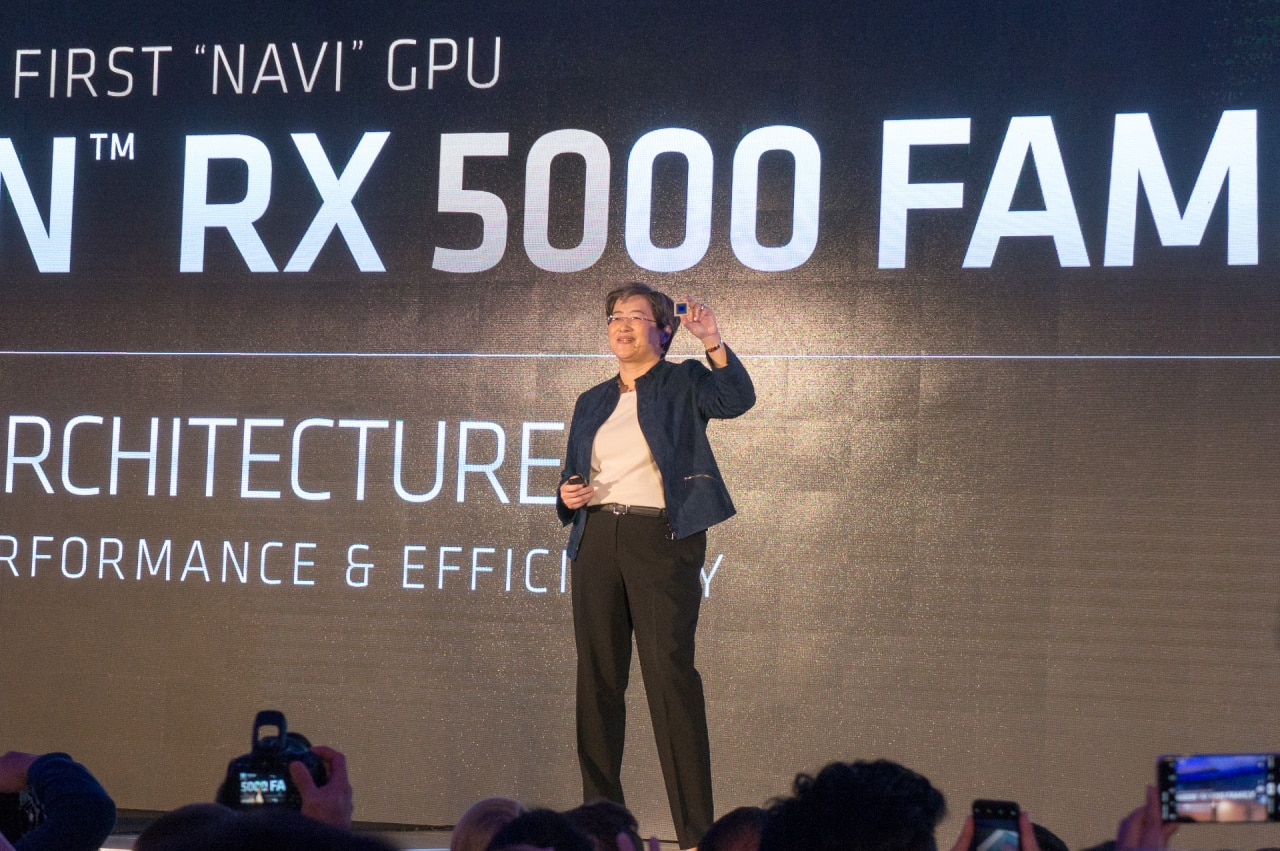In addition to the new processor series Ryzen 3000, AMD announces more details about the next graphics family called Navi. The details around this have largely been shrouded in obscurity and the question marks over whether the architecture is yet another development of Graphics Core Next (GCN) have been many.
Now AMD confirms that this is a fundamentally new graphics architecture. To emphasize and clarify this, the company draws a parallel with the architecture Zen, where they started again from scratch. The name of the graphic architecture is RDNA, which is an abbreviation of Radeon DNA.
It is a completely new type of calculation unit with improved energy efficiency and performance per clock frequency (IPC) compared to GCN. RDNA also has a completely new cache hierarchy on several levels for lower internal latencies, higher bandwidth and lower power consumption. Furthermore, RDNA has one pipeline which will enable higher clock frequencies than before.
The performance at a given clock frequency is stated to be 25 percent above GCN, while the performance per watt is 50 percent higher. However, AMD does not comment on whether the comparison is with Radeon VII, which is also manufactured at 7 nanometers, or whether the improvements are purely conceptual without connection to a specific product.
First out with Navi and the RDNA architecture is the Radeon RX 5000 series. The first circuit is manufactured like AMD’s processors on TSMC’s 7-nanometer technology and is a relatively small story, which is intended to go up against Nvidia Geforce RTX 2070 while Radeon VII will hold the positions in higher performance classes.
The first graphics card is more specifically called the Radeon RX 5700 and in a comparison with the Geforce RTX 2070, it performs about 10 percent better in the game Strange Brigade. This is also the only scenario AMD shows on stage and it is therefore difficult to predict how the graphics card will stand up to RTX 2070 in other game titles.
The launch of the Radeon RX 5000 series will take place in July, probably some time after the Ryzen 3000 series which will be released on July 7.
RDNA a brand new best – GCN lives on
That it is a new architecture contradicts previous information that Navi would be based on a further development of GCN. When SweClockers talks to AMD’s chief engineer at Radeon Technologies Group (RTG), David Wang, he states that RDNA is a completely new creation and not yet a further development of an aging GCN.
While GCN has so far been an architecture meant to fit everything, from gaming computers to data centers, RDNA should be a pure graphics architecture for gaming. The advantages of this are several, such as that AMD can have higher energy efficiency and make smaller, more affordable, graphics circuits to the end customer.
However, this does not mean that RDNA will be completely without the ability to perform general calculations. There is some capacity and AMD will further develop these parts as well, but then focus on things that provide better performance in games. During the conversation, this card was described as “gaming oriented compute”.
Scott Herkelman, general manager of AMD’s RTG division, adds that the company has a long roadmap in front of it which contains several new iterations and updates of RDNA. Herkelman does not want to go into what the future plans look like, but he stops at AMD sooner or later releasing them publicly.
At the same time, RDNA does not mean the end of GCN, on the contrary, the architecture lives on and will be further developed for general calculations. After repeated questions about whether GCN really should not be replaced by RDNA in the long run, David Wang confirmed that there is a clearly defined roadmap also for GCN.
The idea is that Graphics Core Next will be used for, for example, Radeon Instinct and data center, while Radeon DNA will be entirely aimed at the gaming market. In other words, AMD will have two different graphics architectures that are developed in parallel; one for compute and one for games.
AMD also confirms that the first wave of RDNA-based graphics cards will be unsupported ray tracing, but do not want to go into why this is the case. Herkelman also chooses not to criticize Nvidia and their implementation, but points out that AMD as a company definitely believes that ray tracing in real time is the future of computer graphics.
Once AMD jumps on the bandwagon, there is nothing they are prepared to answer. It is worth mentioning, however, that Sony’s next generation Playstation is based on Navi and receives support for the technology, which suggests that AMD will also introduce graphics cards in the Radeon series with this in the year 2020.
► Read everything from #computex-2019















